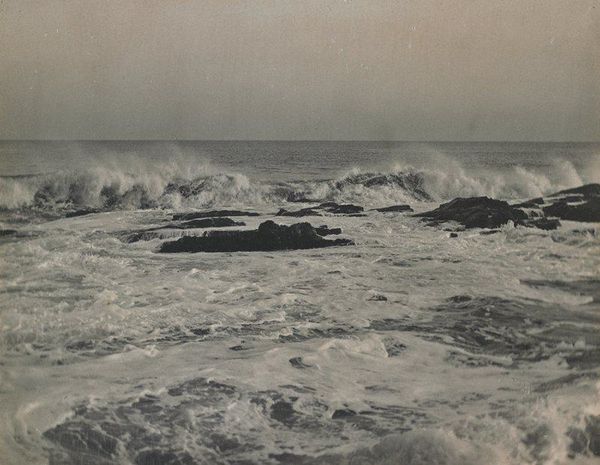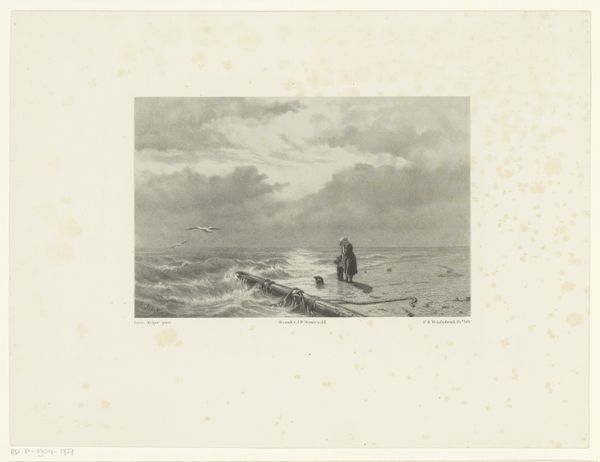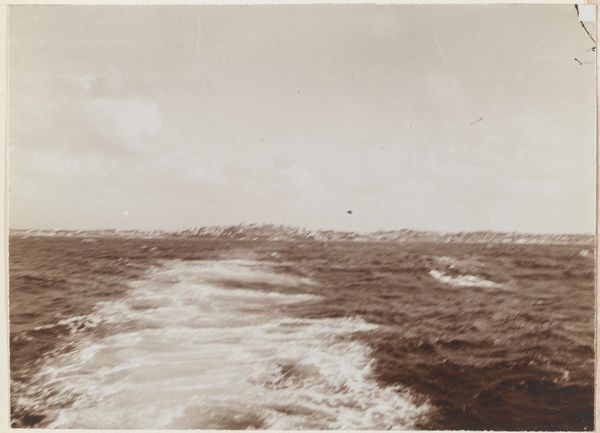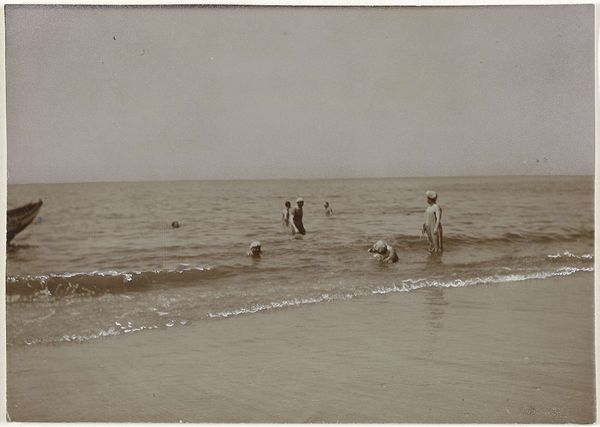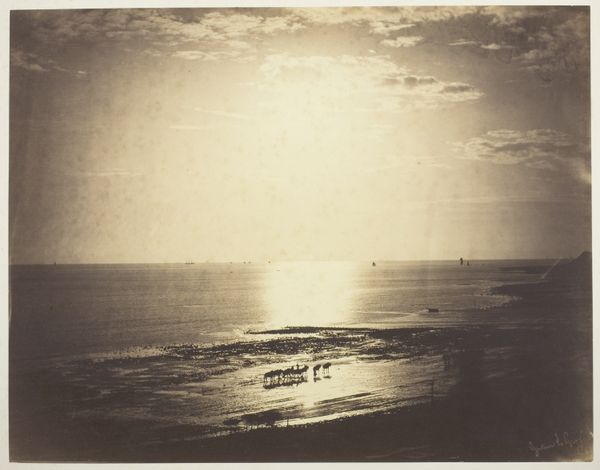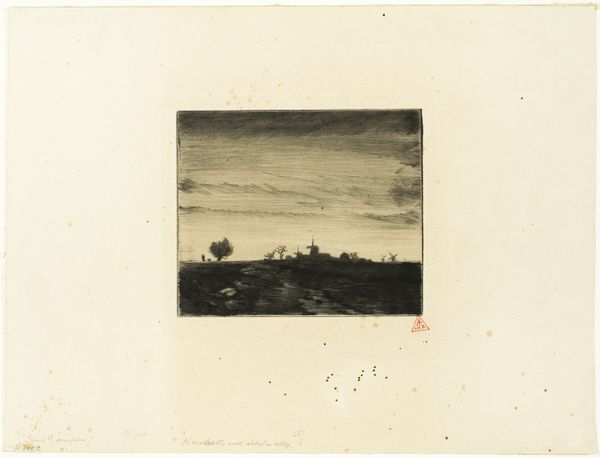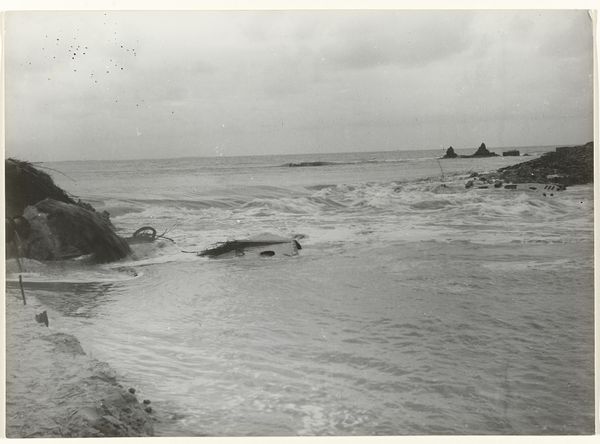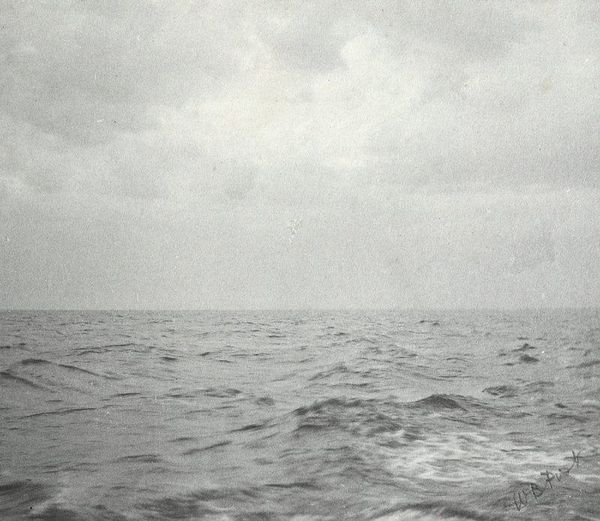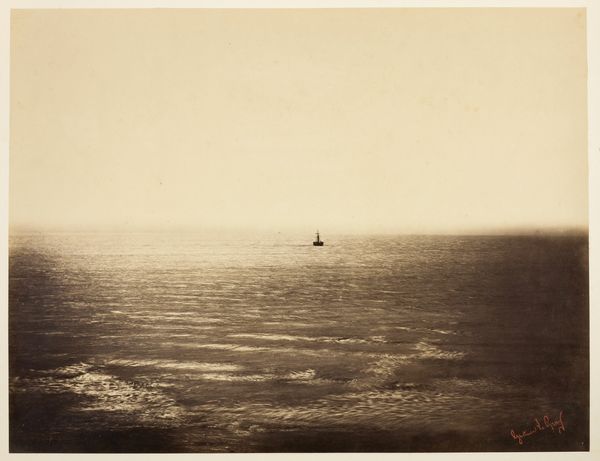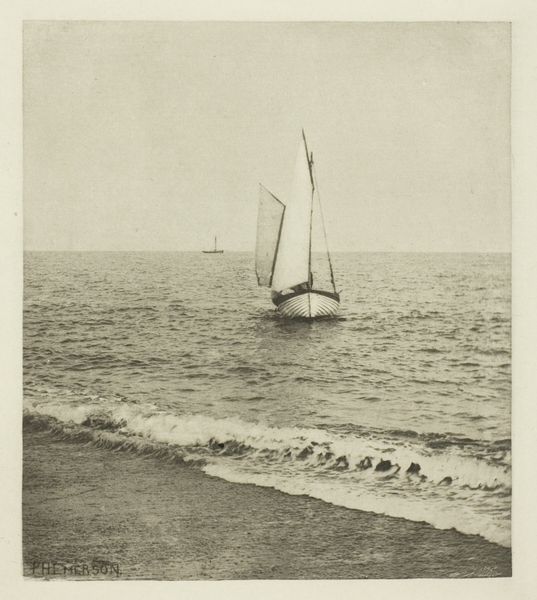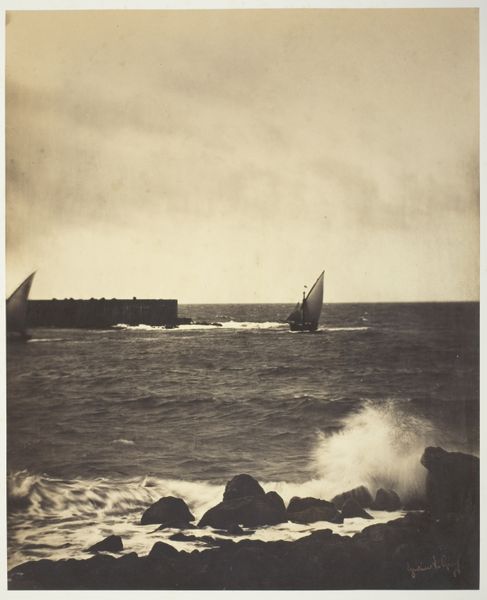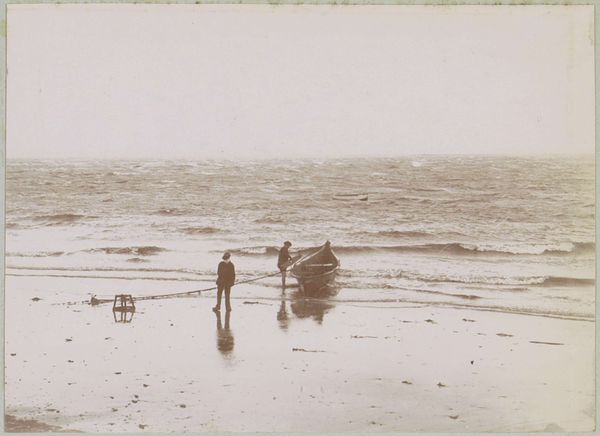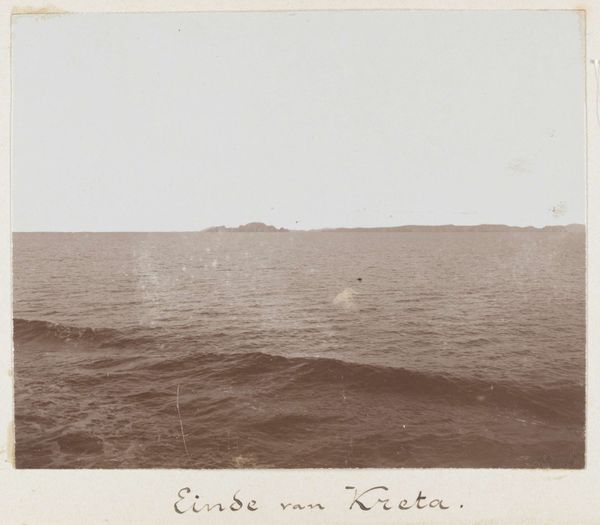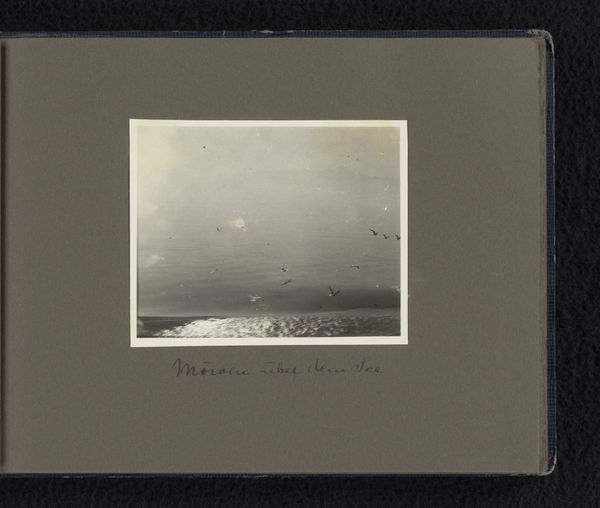
photography, gelatin-silver-print
#
pictorialism
#
landscape
#
photography
#
natural colour palette
#
gelatin-silver-print
#
remaining negative space
#
watercolor
#
sea
Dimensions: height 76 mm, width 107 mm
Copyright: Rijks Museum: Open Domain
Curator: Here we have Johannes Lodewijk Heldring's 1898 gelatin silver print, "Gezicht over de Middellandse Zee op Kreta" or "View Over the Mediterranean Sea in Crete." It’s a striking landscape using the Pictorialist style. Editor: My first impression is… stillness. That’s surprising given the subject is the sea. But the sepia tones, that hazy horizon line… It evokes a quiet, meditative feeling more than anything overtly maritime. Curator: Pictorialism, popular at the end of the 19th century, valued artistic effect over pure representation, something immediately clear in this piece. Heldring manipulates the print, softening details to make it look almost like a watercolor. That supports the meditative feel you noted, I think. It detaches the viewer from reality. Editor: Exactly! The absence of sharp focus almost renders the sea abstract. The vast expanse of water dominating the frame, punctuated only by a single dark rock in the foreground… It’s about mood, not a precise depiction of a place. I wonder, what were the artistic movements and public exhibitions defining photographic landscape art at this time? Curator: The turn of the century was full of debate, because photography sought acceptance in the established art world, that's right. The Photo-Club de Paris exhibited Pictorialist photography, as did other major European art institutions, solidifying photography’s claim as art. Heldring and other pictorialist photographers leveraged this, exploring creative and subjective representation. His approach challenged conventional notions of photographic realism in portraying natural subjects, in essence seeking social approval. Editor: There’s a tension here between objectivity, what photography inherently *does*, and this desire for artistic validation, wouldn't you agree? I wonder if Heldring felt he had to justify his medium by making it…painterly? Curator: A definite possibility. Pictorialism existed in an era of both technological advancement and anxiety regarding photography’s artistic standing. The movement itself navigated those anxieties and its relation to public opinion. I mean, even now photography gets judged, for instance the overuse of filters etc. Editor: It makes you wonder if the public in 1898 received Heldring’s view of Crete with the awe we now reserve for purely photographic art. I mean, there is that inherent link of "true-ness" to the photo, isn't it? Curator: A powerful point to make. Editor: For me, thinking of the Mediterranean—that vastness, that history—rendered in such soft focus adds an intriguing layer. It's a dream of a sea, a memory of a sea, not just seawater. Curator: An exquisite final note, I agree. Thank you.
Comments
No comments
Be the first to comment and join the conversation on the ultimate creative platform.
